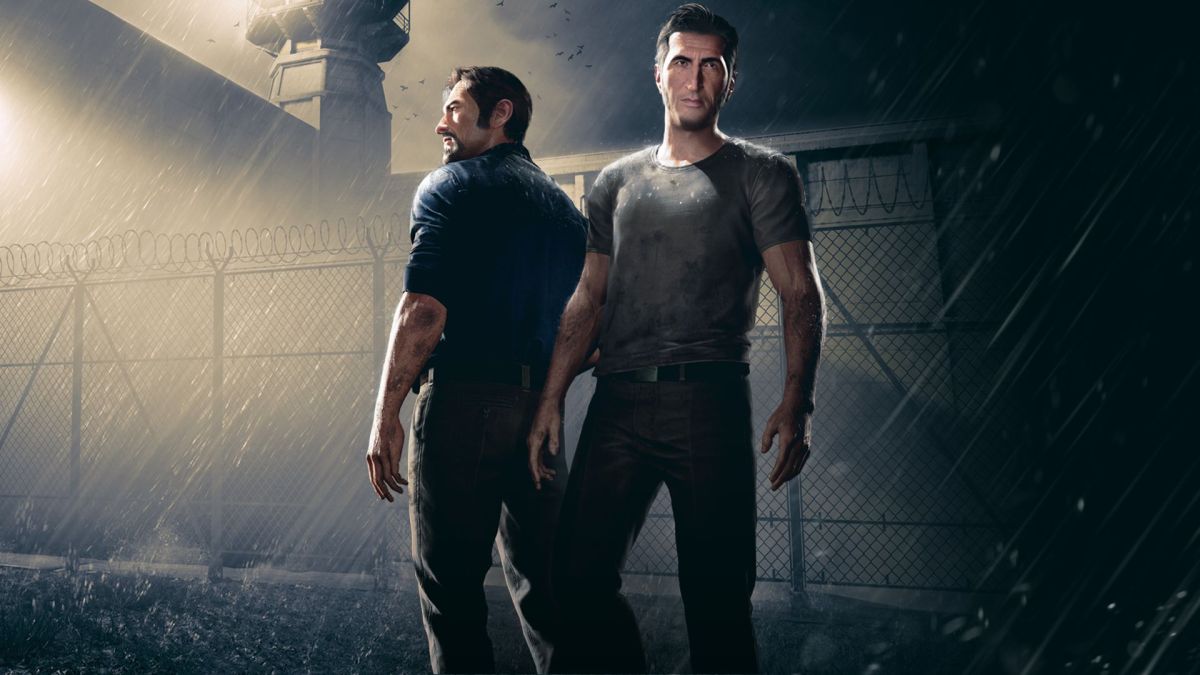This place is a prison, these people aren’t your friends
A Way Out dedicated its entire title to only one act of its story. It’s a bit deceiving to call this a prison break game (even though, yes, they do eventually get out) because it’s a lot of other things too. A Way Out is a revenge saga, a Bonnie and Clyde-like outwit and outrun the cops tale, a bonding adventure, and a guilt trip that masquerades as a road trip.
What’s left is this patchwork quilt of pastiche, a B-movie Frankenstein of a million things that have been done in cinema. But as far as video games go, A Way Out is often a brilliant cooperative experience that is legitimately enjoyable — and that will be enough to convince you to turn a blind eye to a lot of the writing that’s as delicate as a sledgehammer.

A Way Out (PC, PS4, Xbox One [reviewed])
Developer: Hazelight Studios
Publisher: Electronic Arts
Released: March 23, 2018
MSRP: $29.99
A Way Out is a pure cooperative game in that it can’t be played any other way. Two people are required, either through couch co-op or online play. (It’s worth noting that purchasing the game essentially grants you an additional copy to gift to a friend. While this person can play through the entirety of the story, they can’t unlock achievements and trophies.)
There’s good reason for this forced collaboration. A Way Out is structured such that a partner is necessary for most every moment. Some of it is done in predictable ways — like someone standing on a platform while the other person moves it — but a lot of it is better than that. An early sequence has both players in adjacent cells, requiring one person to act as a lookout for guards while the other creates an escape hatch through the back of the toilet. A little later, the duo maneuvers up a ventilation shaft by going back-to-back and slowly climbing by moving their legs at the exact same time.
Because of this shared responsibility, A Way Out‘s protagonists are equally important although very different people. Vincent is a rational and mostly-quiet man who’s at the very beginning of a 14-year sentence for white collar crimes (with a fishy murder charge tacked on too); Leo is a brash bruiser who has been in the clink for six months on armed robbery and grand theft charges.
They have similarities, though. They’re both family men. Leo has a young son who he’s trying to hide his criminal life from. Vincent went to prison when his wife was mere weeks away from giving birth to their first child. However, their strongest commonality is a vehement hatred for a man named Harvey. Breaking out and delivering just comeuppance is the greatest motivator for this narrative that relies on vengeance more than anything else.
Along the way, Vincent and Leo begin to understand each other. They find ways to lean on and support each other emotionally, like when Leo eventually (and unexpectedly) suggests Vincent should write a letter to his wife that tells her what kind of husband and father he wants to be. It takes a while to get there though. Early intimate interactions between the two come off stilted and awkward. There are separate moments where they both explain the heart-breaking situations that led to their incarcerations; each time, the listener simply replied with “that’s rough.”
I made a point of remembering the first “that’s rough” because I thought it felt so human. What do you say when someone tells you something so crushing that you don’t have a good response? What do you say when you feel like your words won’t ever be good enough to serve as any sort of consolation? You end up muttering something like “oh, no” or “I’m so sorry” or “that’s rough.” But to have the second character return in kind with the exact same phrase, well, that’s bad writing.

Frankly, A Way Out is littered with bad writing. It’s full of the sort of clichéd one-liners that are an earmark of ’80s crime movies. At one point, Vincent literally says “I’d rather be uptight than a loose cannon.” These are regular occurrences, and they don’t necessarily come off as adoring nods to their influences. They feel more like forced banter that doesn’t elevate the story in any way.
One of A Way Out‘s more stylish tricks lies in the presentation. The split-screen format lends itself to smooth transitions from cutscenes and into each player’s perspective. Sometimes, when one person triggers a particularly important moment, the screen will grow in their favor and relegate the other player’s going-ons to an afterthought. It’s a double-edged sword though, as it can lead to some supremely stupid interactions. There’s a hospital scene where my partner tried offering hope to a terminally ill cancer patient; I was in the other frame seeing how long I could balance myself in a wheelchair.
But, for all the ridiculous situations and terrible dialogue, it’s easy to stay enamored with A Way Out. Obvious influences like Shawshank Redemption and Scarface make for a game that feels familiar yet entertaining. (Seriously, there’s even a sequence where you time your loud-noise-making to the crack of the thunder.) The explosive setpieces and creative cooperation make up for any bungled exposition.
There’s a constant mood about A Way Out that makes it seem like it’s more inventive than it really is. Disregard that and you’re left with a decent-enough story with some genuinely enjoyable video game moments. It’s campy fun and that’s perfectly fine. Just don’t expect too much more.
[This review is based on a retail version of the game provided by the publisher.]





Published: Mar 29, 2018 12:00 pm